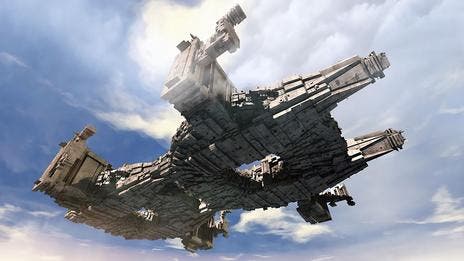
If it weren’t for man’s innate drive for exploration and curiosity, humanity might have never made it farther than its African cradle. There’s a reason why humans are the dominant race on Earth and why there are only a few pristine places left, unscathed by man’s touch. Some have liken this expansion with the familiar behavior of a virus; and one can’t blame them since in some respects humans truly act like viruses. The question remains – what’s next? Well, other planets of course, even barren rocks like moons or asteroids could do just as well. While off-world colonization is still but a fleeting dream, the prospect remains feasible and realistic. There are innumerable challenges that need to be surmounted first. For instance, one very important, basic question is how will these star travelers have babies?
Space babies
It seems like a silly question, but it’s not. I’m not referring to the ol’ flower and the bees trick. You see, it’s most likely that humanity’s first efforts to reach for distant planets in hope to colonize and spread the human seed to other solar systems will involve sub-light speed space travel. This is an understatement actually. Reaching the closest star might take a couple hundred years at best. This means countless generations of babies conceived, born and raised in space. Is such a thing possible in the first place? Have you ever heard of a baby being conceived and born in space yet? Until this is proven for a fact, we need to consider the possibility that it might not be possible to reproduce in space, and if this is true than humanity is truly doomed to never spread farther than our solar system.
“If we’re going to have a long-term future in space, it won’t be done by a handful of astronauts, it’ll be whole communities,” says Cameron Smith, an anthropologist at Portland State University in Oregon.“It’ll have to be.” But can this work in reality?
Studies have shown thus far that exposure to microgravity and the harsh radiation of space, based on data gathered from astronauts stationed on the International Space Station, can pose serious health issues. Japan is currently investigating one aspect of space reproduction problem on the International Space Station with the intriguingly named Space Pup experiment. This involves flying freeze-dried mouse sperm for several months at a time to study the effects of space on mammalian fertility.
Let’s then assume that it’s indeed possible to conceive babies in space without any health risks (artificial gravity, radiation shields) by fostering children in an artificial environment analogous to conditions on Earth (why not?). A new problem still exists, this time a philosophical one.
“Philosophers call this consent to risk,” explains Smith. “Is it morally acceptable to put someone else at risk without their consent? That is, to have a child in those conditions?”
The short answer to this question is “yes”, Smith explains. He draws parallels with the Polynesian people who travelled thousands of miles from Papua New Guinea some 3,000 years ago to colonise dozens of islands in the South Pacific. “They are casting out into the unknown,” says Smith. “They certainly took risks but wanted to provide a new place to live for their children.”
The Japanese experiment will definitely be worth closely following, after all the future of human space flight might depend on its results. As an exercise of imagination, it’s worth mentioning that as humans will move on to colonize distant worlds, it’s not crazy to consider these colonists or their children’s children will become as alien as they come.
“The people who arrive at a planet several centuries from now will be as familiar and as alien to us as people of the time of Shakespeare,” suggests Smith. “Their accents will be different, their concepts of the Universe will be different.” He refers to them as star people – a whole new variety of humans.






